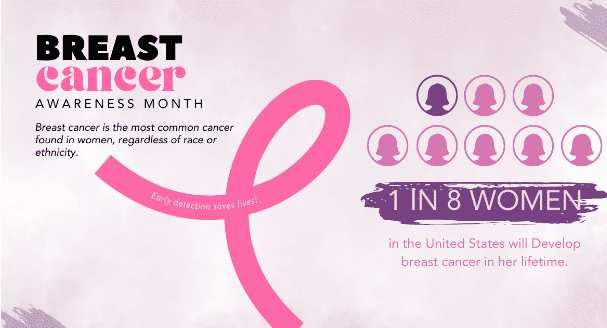From Clay County Medical Center
The following information comes from Mindy Lovendahl, FNP-C, Certified Family Nurse Practitioner. It was also reviewed by Dr. John Kelley, CMO, both of Clay County Medical Center.
What age should women start receiving mammograms? (And how often?)
It is recommended that women start 2D or 3D mammography at age 40. Women
between the ages of 40-54 should get mammograms annually. Women over the age
of 55 should continue mammograms every other year but can continue to have
annual mammograms if they choose to do so.
Please list the scenarios when younger mammograms may be requested. (What
level of family history.)
For women at high risk for breast cancer, early screening for breast cancer may be
necessary starting at age 30. If a family member has been diagnosed with breast
cancer, it is recommended that screening start 10 years before the earliest onset of
breast cancer in the family.
For example, if a patient’s mother was diagnosed with
breast cancer at age 35, the patient should start breast cancer screening at age 25.
Examples of those at high risk for breast cancer include:
· Known personal BRCA1 or BRCA2 gene mutation – via genetic testing.
· First degree family history of BRCA1 or BRCA2 gene mutation – a first degree
family member includes a parent, sibling or child.
· Had radiation to the chest before age 30.
· Personally have or have a first degree relative who has Li-Fraumeni syndrome,
· Cowden syndrome or Bannayan-Riley-Ruvalcaba syndrome.
How common is breast cancer in males?
While breast cancer is not as likely in men, men can and do get breast cancer. In
2023, an American Cancer Society statistic revealed that 2,800 men were diagnosed
with breast cancer and 531 of those men died from that diagnosis. Approximately
one in 726 men will be diagnosed with breast cancer in their lifetime.
Please describe how to give a self-exam:
Breast Self- Examinations should start at age 20 and continue throughout a lifetime,
including during pregnancies. There are 5 steps to a breast self-examination:
1) Stand in front of a mirror with your hands on your hips and straight shoulders.
You are looking for:
· Any changes in color, size or shape
· Dimpling, puckering or bulging
· Redness, soreness, rashes or swelling
· Nipple changes (protruding nipple now inverted and vice versa
2) Raise your arms up and repeat Step #1.
3) Check for nipple discharge/fluid which could be milky, yellow, watery or
bloody. (If you are a woman, it is a good idea to check your bra for dried fluids
that may be from the nipple as well.)
4) Check for breast lumps while lying down.
· Raise the right arm above your head while examining the right breast
with the left hand.
· Use your index and middle fingers, keep the fingers together and flat,
to firmly press into the breast tissue and move them in a circular
motion about the size of a quarter at a time. Examine the areolar area
and under the nipple as well.
· Be sure to check the area around your collar bone and sternum (down
the middle of the chest) as well as into the armpit.
· Repeat with the left arm above your head while examining the left
breast with your right hand.
5) Repeat the same exam above while in the shower to feel for breast lumps
while standing.
How often should you perform a self-exam?
If you are a menstruating female, it is best to perform a breast self-exam 3-5 days
AFTER your period starts when the breasts are least likely to be tender and/or
swollen.
If you are a male or a postmenopausal female, a breast self-exam on the same day
each month is best. This is typically easily done while washing the chest while in the
shower.
What are warning signs of a self-exam that mean it’s time to reach out to your
medical professional?
You should contact your primary care provider if you notice any of the following:
· New hard lump in the breast or armpit. Breasts are often dense making them
feel “lumpy” but any lump that is not mobile or feels “new” should be
evaluated.
· Nipple changes or sudden nipple discharge.
· Skin changes such as rashes, redness, dimpling, puckering, swelling or other
changes.
· Breast shape or size changes. Most breasts are not symmetrical so it is
important to know what is “normal” for you so that you can recognize any
changes.
· Tenderness/persistent pain. Breasts are often tender before and during
menstrual cycles but tenderness that does not improve/resolve should be
evaluated.
Resources:
https://www.cancer.org/cancer/types/breast-cancer/screening-tests-and-early-detection/americancancer-society-recommendations-for-the-early-detection-of-breast-cancer.html
https://www.breastcancer.org/screening-testing/breast-self-exam-bse
https://www.komen.org/breast-cancer/screening/clinical-breast-exam/ https://my.clevelandclinic.org/health/diagnostics/3990-breast-self-exam













